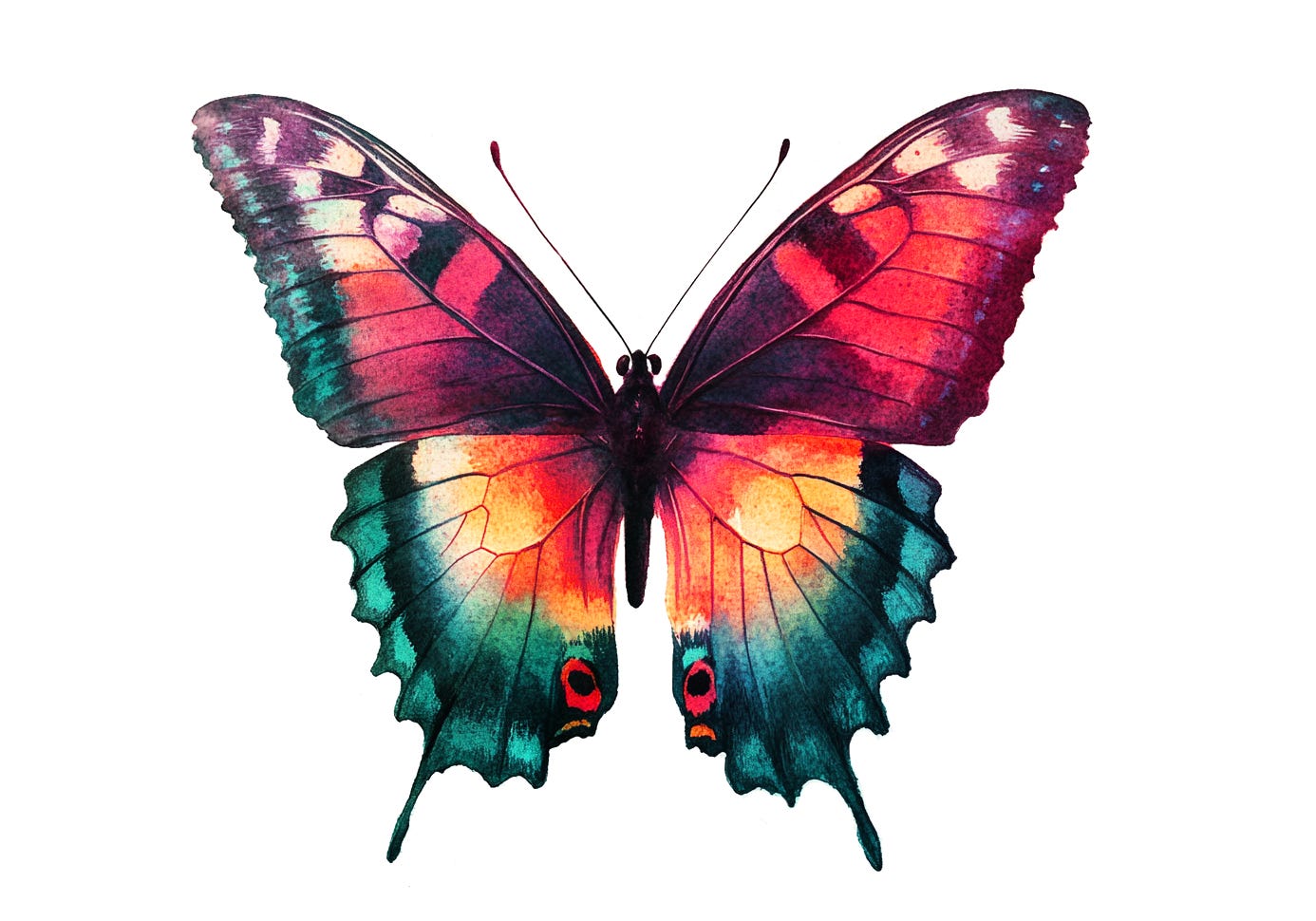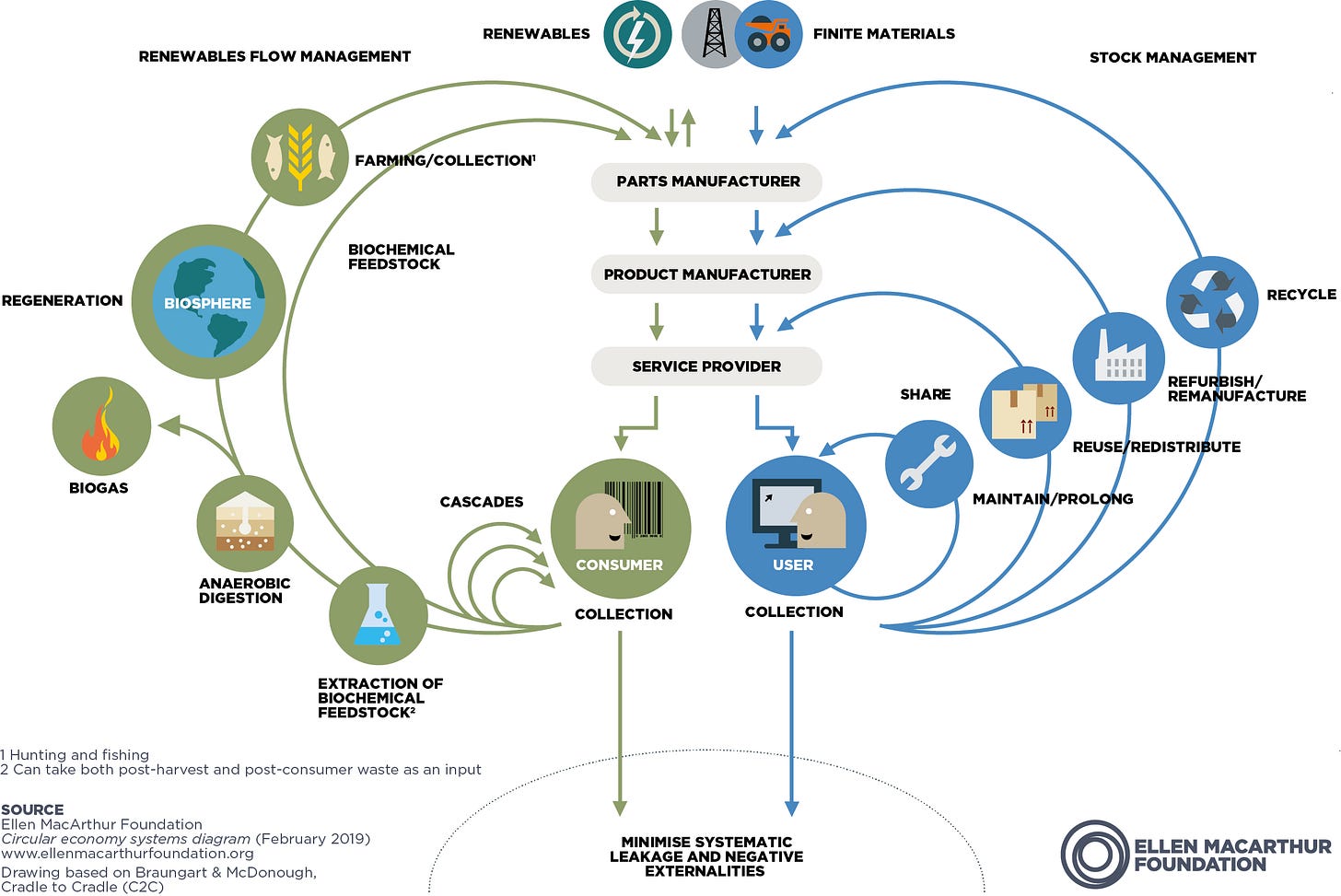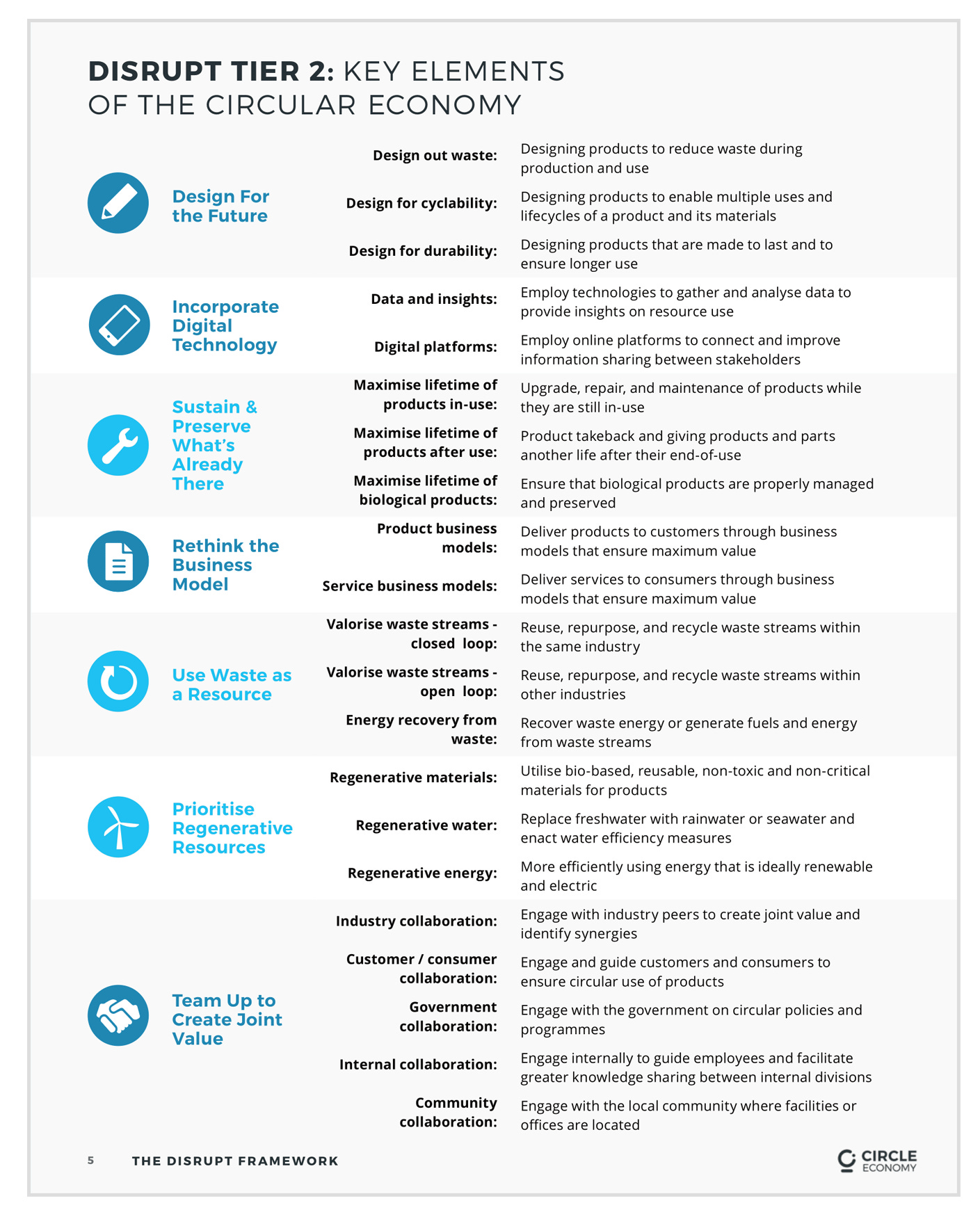What is Circularity—and Why Should You Care?
How a Circular Economy Reimagines the Lifecycle of Everything We Use
Circularity.
If you work in sustainability, recycling, or environmental design, this term probably rolls off your tongue daily—so much so that you forget how foreign it sounds to others.
But then I find myself at RE+ (a Renewable Energy Conference) surrounded by 40,000 clean energy professionals, or in a writing workshop, or at dinner with friends—and someone will ask:
What exactly is circularity?
And for a moment, I’m stunned. It feels like I’ve stepped out of my universe and am suddenly speaking a language no one understands. Which is wild, because I know these people care.
About climate.
About justice.
About doing the right thing.
So I want to take a moment, here at the very start of Circular Unicorn, to answer that question.
To get clear. Not as a professor or policy nerd, but as a human navigating the same complex, consumer-driven world you are.
Circularity is...
At its core, circularity is the practice of keeping materials and products in use for as long as possible—through repair, reuse, refurbishment, and, as a last resort, recycling.
It’s about honoring the carbon, labor, and natural resources that went into creating everything we use. From the razor in your shower to the Instant Pot with a busted knob, to the mattress pad you love—until it springs a leak and no one will fix it (more on that in a second).
Most of our global economy is linear: we take materials, make products, use them briefly, and then toss them “away.”
But there is no away.
There’s just landfills, incinerators, or distant ports that offload our waste into someone else’s backyard.
Circularity is how we begin to reverse that story.
In nature, there is no waste. The fallen leaf becomes soil. The carcass feeds the microbes. Everything is used, reused, and reintegrated. That’s the gold standard. And while humans may never match that level of elegance, we can move toward it—especially in how we design, produce, and manage products across their full lifecycle.
Why Should You Care?
Because everything you own had a beginning—and will have an end.
That car in your driveway? Those sneakers? The solar panels on your roof? Every one of them required materials, mined or harvested, often halfway across the globe. Most came from fossil fuels or rare minerals. Most involved enormous energy, labor, and transport before reaching your hands.
And someday, they’ll reach their end-of-use.
The only question is: then what?
A Personal Example: The $1100 Mattress Pad
A few years ago, after months of research and a lot of deliberation, I bought a fancy hot-and-cold mattress pad as our only Christmas gift. It was glorious. Warm in winter. Cool in summer. It transformed my sleep.
But last week, after carefully following the instructions to wash it, something snapped. A tiny, embedded water tube broke. It began leaking. And the whole system stopped working.
When I contacted the company, their only solution?
“Sorry, you’re out of warranty. But here’s 25% off a new one.”
That was it. No repair service. No troubleshooting tips. No online guides or community forums. Nothing.
It was a product I loved—until it failed. It’s barely broken. And now it’s just e-waste. A landfill-bound bundle of plastic, wires, and good intentions.
It doesn’t have to be this way.
Circularity Starts With Design
Circularity isn’t just about what you do with broken stuff. It starts upstream, with companies and designers:
Are they using recovered or recycled materials?
Are parts modular, replaceable, or impossible to disassemble?
Do they offer repair services? Warranties? DIY guides?
Is the supply chain ethical, local, and fair?
In many ways, circularity is the full meal deal—starting with design, flowing through use, and ending with how we deal with end-of-life products. Legislation like the Right to Repair is beginning to catch on (shout out to the EU!), but we need manufacturers everywhere to step up.
And yes, you play a role too. Every purchase is a vote.
So What Does This Mean for Circular Unicorn?
In this newsletter, we’re going to explore the real world of circularity: not just glossy buzzwords or theory, but who’s actually doing this well—and where things are breaking down. And I’m curious to hear YOUR stories about this.
We’ll cover:
How different materials (like solar panels, batteries, textiles, and concrete) fit into the circular economy
Startups and companies leading the way
Tools and guides to help you think through your own purchases and disposal habits
Policy shifts (like Extended Producer Responsibility) that are changing the game
Case studies and real stories—like mine
We’re not here to preach. We’re here to ask better questions. To explore how we can live more aligned with the natural systems we’re part of. And to help you, and others like you, see the world through a circular lens.
Below is a breakdown of what TRUE circularity looks like.
Most companies are NOT doing this at all.
But some are working on it, and all are IMPERFECT except Master Mother Earth 🌎.
Progress is ticking off as many boxes as possible,
And supporting companies that do.
If You’re Curious, Start Here:
This excellent post by Shoaib Jamro – On LinkedIn starting with design, not recycling
Circle Economy - Amsterdam-based company providing resources and reports.
Circularity is not a perfect science. It’s a mindset. A framework. A systems-based way of being in the world.
And it matters more than ever.
If this resonates, share it. And hit “Subscribe” if you haven’t already—because this is just the beginning.
Let’s chase that unicorn together.






